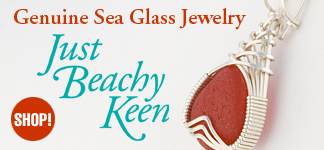The Sea Glass Shard of the Month: December 2016
An Amber Brown Marmite Sea Glass Bottle
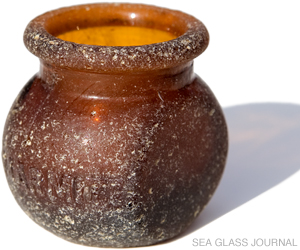
Sea Glass Specifications:
Color: Amber Brown
Length: 36.5 mm (1.438")
Width: 28.6 mm (1.125")
Height: 34.1 mm (1.344")
Estimated Age: 70 to 80 Years
This month's sea glass specimen is an intact and well-conditioned, small brown Marmite bottle. Marmite is the brand name of a savory spread, invented in England, made from a concentrated yeast by-product of the beer brewing process. While this food product may be unfamiliar to most sea glass collectors around the world, it is well-recognized in the United Kingdom.
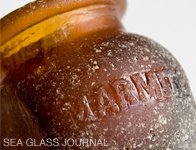
A close-up photo of this sea glass bottle reveals the Marmite name on the side.
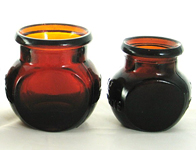
Two ounce and one ounce Marmite jars from the 1920s-30s. Photo courtesy Bottledes Antique Bottles.
The Marmite Food Company, which began in 1902, initially used small earthenware pots to distribute the spread. By the mid-1920s glass jars with tin lids replaced the pots. This information helps to date the sea glass jar featured. Also of note is the fact that the metal lids were replaced by plastic screw caps in 1984.
While this food product may be unfamiliar to most sea glass collectors around the world, it is well-recognized in the United Kingdom.
While I haven't been able to obtain specific information on Marmite lid evolution, it appears the sea glass jar featured in this article is of an earlier metal flip-lid design similar to the Marmite jars pictured in the photograph to the left. Those jars were produced circa 1920s to 1930s thus indicating our sea glass jar is between 70 to 80 years old.
The brown color of the glass used for the jar was probably chosen due to its ability to block sunlight which protected the contents. The different brown hues created in glass production where archived by adding iron oxide with sulfur and carbon in varying amounts during the manufacturing process.
Brown glass comes in various hues from golden amber to dark brown and it can sometimes be difficult to determine the actual shade of a particular sea glass shard when found on the beach. It has been suggested by Richard LaMotte in Pure Sea Glass to wet the piece and then hold it up to the sunlight to assist in determining its actual shade.
While some shades of brown sea glass are more common than others, what can make a sea glass find unique is the shape, size and origins of the shard. In this case, an intact jar — albeit small, does contribute to it being a very special find for any sea glass collector.
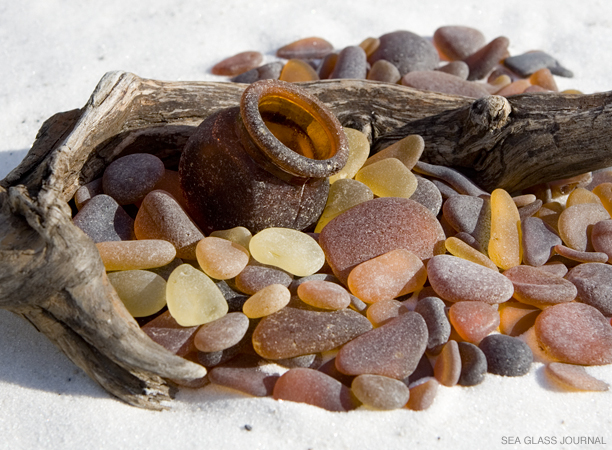
Keep up-to-date on all things sea glass... "Like Us" on Facebook!
Sea Glass Journal on Facebook





